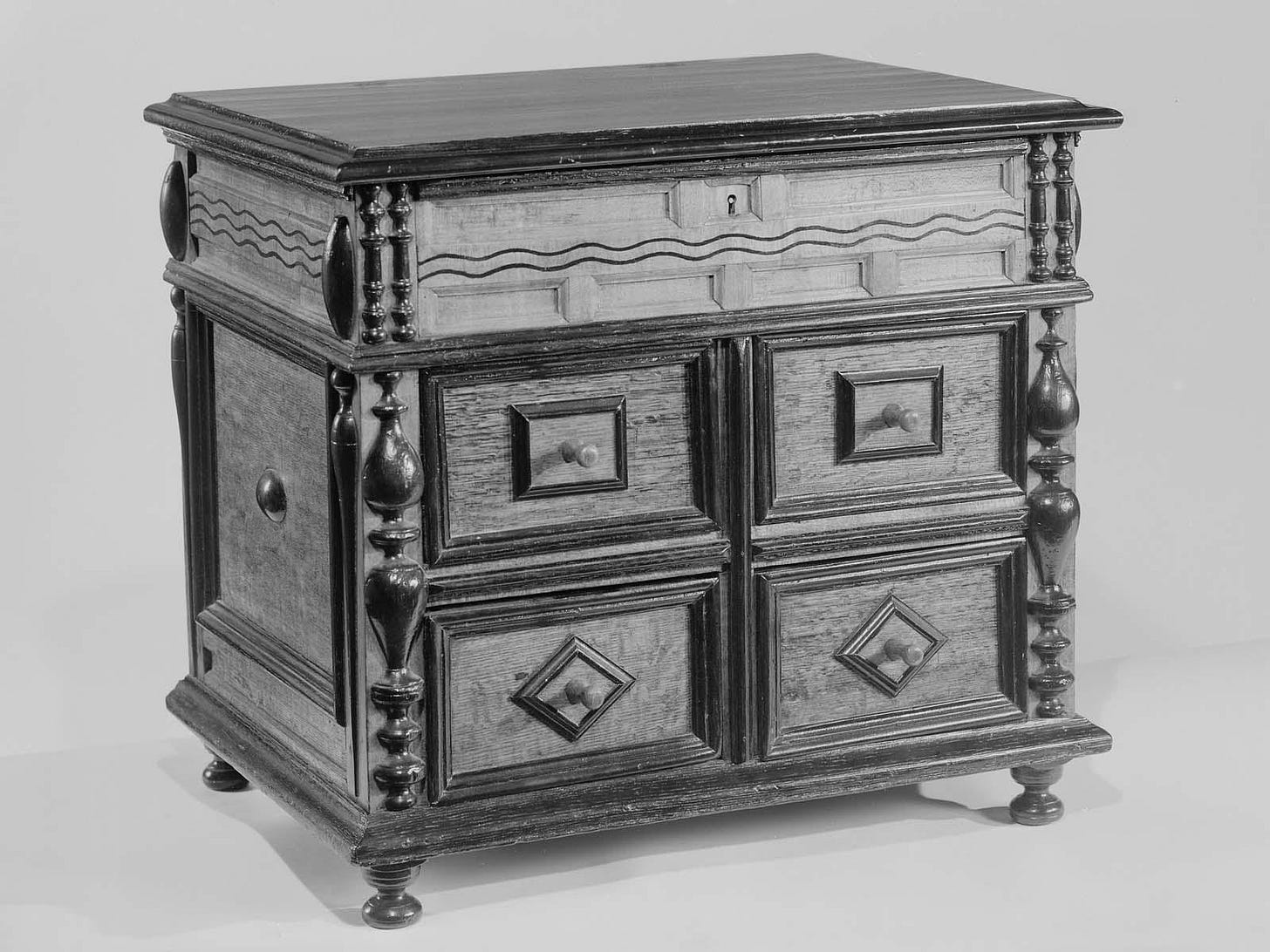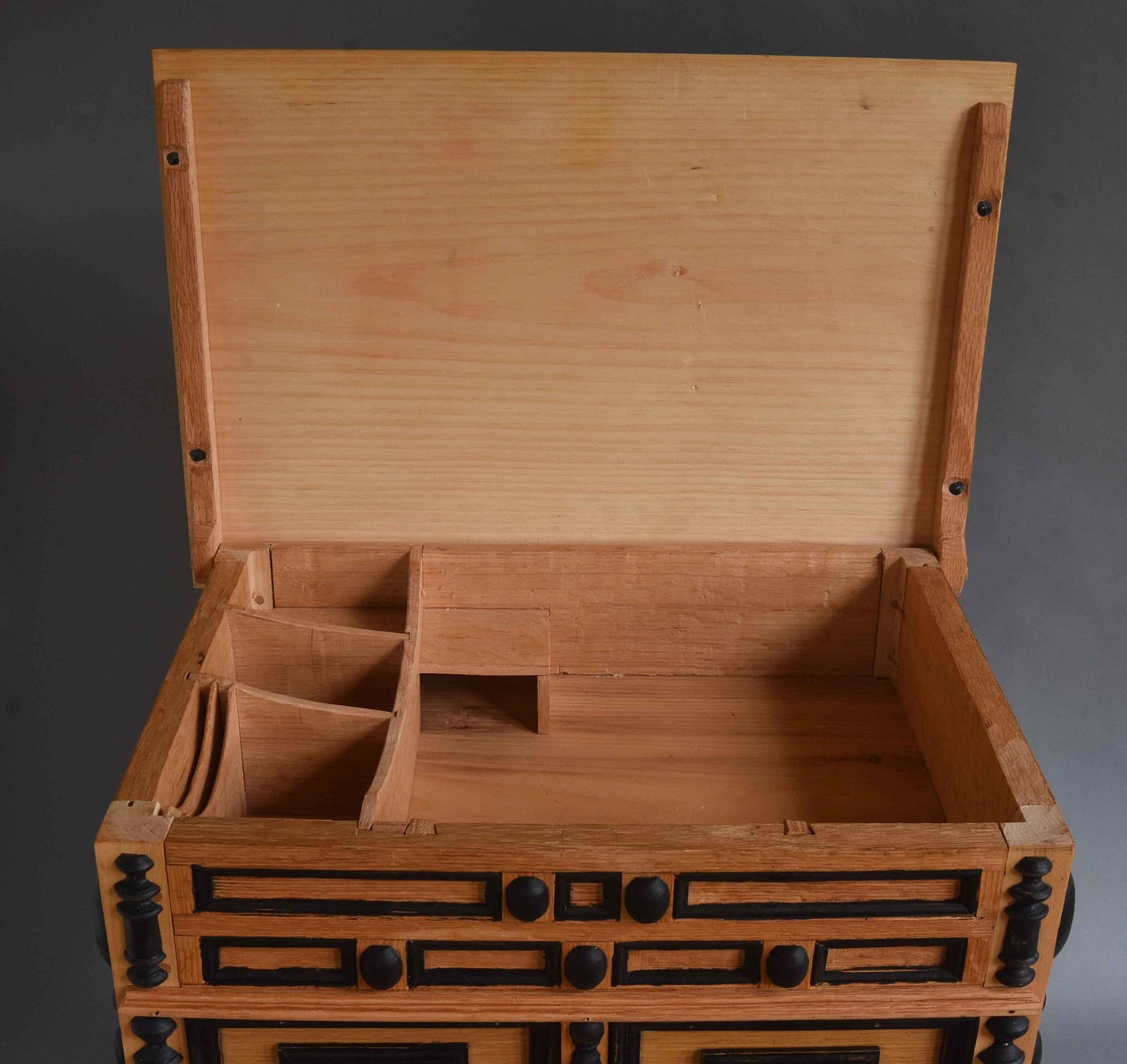Some odds and ends kicking around. I finished (essentially) my version of the “dressing” box - a project I started ages ago and shelved for quite a while. My intention with this one all along was to use it as a learning step - so looking at it now there’s lots of notes I’ve made about the next version.
First of all - it’s an odd thing. That northern Essex County Massachusetts shop I’ve studied so much produced these. At least twice anyway, there’s one at the Museum of Fine Arts, Boston and another at Winterthur Museum in Wilmington, Delaware. So that’s not a lot to go on. They’re different too - the MFA’s has 4 drawers, Winterthur’s 3. Here’s the MFA’s from their website:
Similar scale, they’re pretty small. MFA’s size is listed at H: 18 1/4” W: 20” and D: 13 1/2”. Mine’s in that neighborhood - but I tucked it up in the loft & forgot to measure it. I’m not convinced we even know what they were for - the late Benno Forman, a renowned furniture scholar from Winterthur, many years ago wrote about them and arrived at the notion they were “dressing” boxes. I think his conclusion was mostly based on the divisions inside the box section -
Mine’s pretty closely based on both versions. The guts of the Winterthur example are original - the MFA’s replaced. But the notches in the front and side rails dictate the size of what goes where. I have one more tiny drawer to make that fits into the empty opening facing us in that view. Then when you remove that drawer, there’s a small cubby beside it. Closest thing to a hidden compartment that I know of it this work.
Here’s a shot I took during an early assembly stage:
One thing that really strikes me in making this - it flies in the face of most joinery traditions of that period. Often one way to describe the joinery I know best is “overbuilt.” This is the other end of the spectrum - pushes the limit of the material again & again. In that box compartment we’re looking at above - the narrow stiles are cut away inside to produce a rectangular interior - that cut-away section stops at the depth of the box section. My box bottom is a thin pine board, I think the MFA’s pine board is original - that’s what I based mine on. It is beveled to fit into a groove in the insides of the four top rails. Right near their bottom edges. Then there’s notches cut through this bottom board to engage drawer-locking pegs that slide through a groove in the top front rail to catch the top edge of the two drawers in the middle. And all the notches for those dividers cross the bottom-groove too. Another view during assembly - look at all those notches & grooves - how does any of it stay together?
Keep reading with a 7-day free trial
Subscribe to Follansbee's Substack to keep reading this post and get 7 days of free access to the full post archives.








